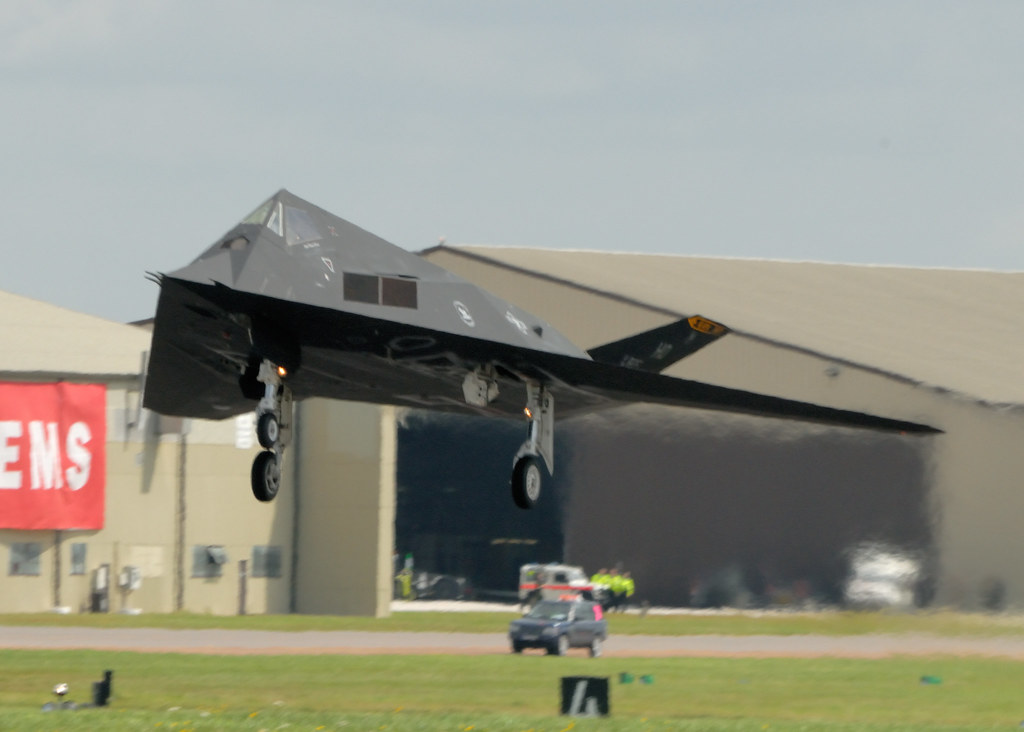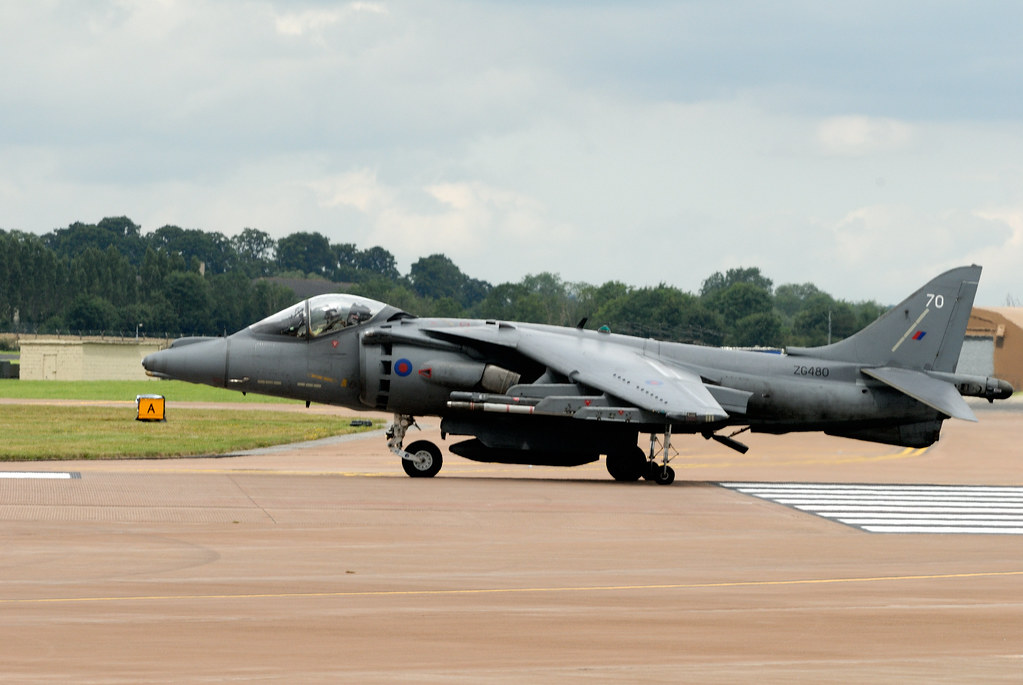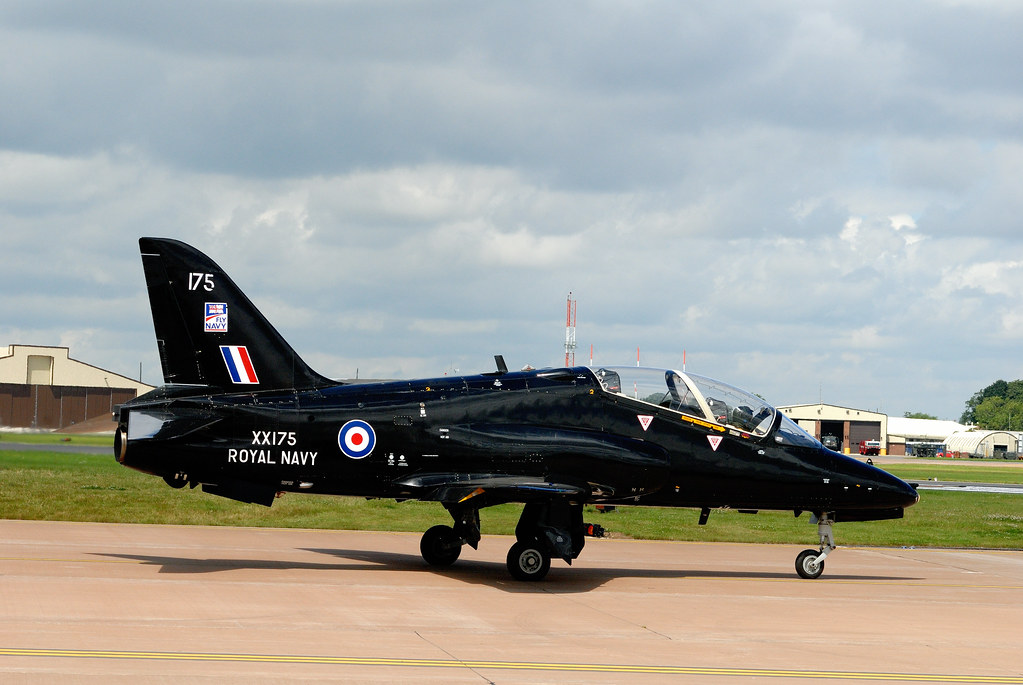#RIAT 2007
Text
jhellender Following
DSC_5571_
RIAT 2007 Monday Departures
USAF Rockwell B-1 Lancer AF85-090
Via Flickr
16 notes
·
View notes
Video
DSC_4851_ by jhellender
Via Flickr:
RIAT 2007 Monday Departures USAF Fairchild Republic A-10 Thunderbolt II 82-654
#JHEllender#John-Ellender#RIAT 2007#Air Tattoo#Air Show#Nikon D200#Nikon#D200#USAF#Fairchild Republic A-10 Thunderbolt II#Fairchild Republic A-10#Thunderbolt II#A10#82-654
21 notes
·
View notes
Video
Lockheed L.1049F Super Constellation 'HB-RSC' by Alan Wilson
Via Flickr:
Built in 1955, this 'Connie' started life as a USAF C-121C, with the serial '54-156'. She served until being sold off in 1972 and becoming an agricultural sprayer registered 'N73544'. Grounded in the early 80's, she was restored to fly again in 1994 before being grounded by the FAA in 2001 for maintenance irregularities. Sold on eBay, she moved to Basel in Switzerland. Registered 'HB-RSC' in 2007, she remains active on the european airshow circuit operated by Breitling. c/n 4175. Seen taxiing out to depart the 2013 RIAT at Fairford. 22-7-2013
4 notes
·
View notes
Text
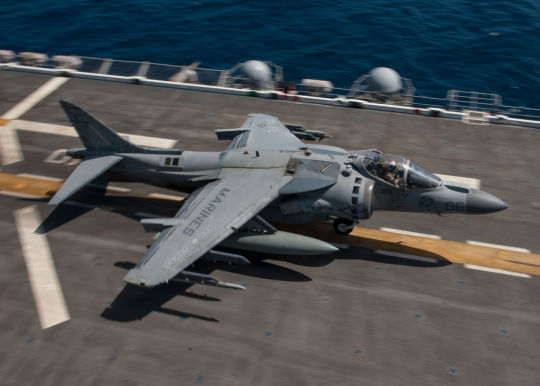
-An AV-8B from VMA-163 takes-off from USS Makin Island (LHD-8). | Photo: National Museum of the U.S. Navy
Flightline: 70 - McDonnell Douglas/BAe AV-8B Harrier II
The AV-8A was operated by the USMC beginning in 1971, but the Marines quickly found that the Harrier was less powerful than hoped, only capable (with a standar takeoff, no less) of carrying a smaller payload than an A-4 over a shorter range. In 1973, a joint US/UK team began work on a project to develop a new Harrier, powered by a redesigned Pegasus 15 engine. This aircraft, dubbed the AV-16, would have double the AV-8A’s range and payload, and would replace the Harrier GR.1/3 in RAF service and the AV-8A and A-4 Skyhawk in USMC roles. The UK pulled out of the project in 1975, owing to rising costs and decreased defense spending, and the US, unwilling to foot the costs alone, canceled the program. McDonnell Douglas and Hawker Siddeley continued work on upgrading the Harrier, and in 1976 began modifying two AV-8As with new wings, revised intakes and nozzles, and other aerodynamic changes. These mules were designated YAV-8B.

-One of two AV-8As being modified into YAV-8Bs. | Photo: U.S. Navy Naval Aviation News
The results showed greater than expected drag, but positive test results in other areas, including payload, range, and V/STOL performance, led to the award of a development contract in 1979. In 1981 BAe (formed by the nationalization and merger of British Aircraft Corporation, Hawker Siddeley Aviation, Hawker Siddeley Dynamics and Scottish Aviation) rejoined the program in 1981, enticed by the more affordable path McDonnell Douglas was forging. The MoU stipulated a 60/40 split between the US and UK companies, with airframe production taking place at McDonnell Douglas’ facilities in suburban St. Louis, Missouri, and BAe’s Kingston and Dunsfold facilities, and engine production split 75/25 between Rolls-Royce (which had previously absorbed Bristol Siddeley) and P&W.

-Illustration: McDonnell Douglas
The AV-8B Harrier II was extensively redesigned from the AV-8A, with the forward fuselage extended and the cockpit raised by ten inches, providing better pilot visibility. To compensate for these changes, the rear fuselage was lengthened by a foot and a half, and a taller tail, based on that used on the Sea Harrier, was fitted. The biggest change was the new supercritical wing, which was larger than the one used on previous models (the outriggers on the AV-8B are in the same place as on the AV-8A/GR.1/3, giving a sense of scale), and had a higher aspect ratio and decreased sweep. The new wing also had leading edge extensions, all of which grants the Harrier II a 6,700lb increase in payload with a 1,000' takeoff roll. The AV-8B was the first combat aircraft to feature carbon fiber composites in its construction, with the wing and forward fuselage being almost exclusively carbon/epoxy construction, leading to the Harrier II being almost five hundred pounds lighter than if it had been constructed from metals alone.

-An AV-8B from VMA-331 in 1991 during Operation DESERT STORM. The squadron eventually dropped 256 tons of ordinance during the war and became the first attack squadron to operate from an amphibious assault ship. | Photo: U.S. Navy National Museum of Naval Aviation
The AV-8B completed operational evaluation (OPEVAL) in 1985, and entered service with the USMC starting with USMC squadron VMA-331 (“Bumblebees”). In 1990 Marine Harrier IIs were deployed to the Persian Gulf on the amphibious assault ships USS Nassau and Tarawa as part of Operation DESERT SHIELD, flying training and support sorties. Despite plans to hold the AV-8B in reserve during the initial phases of DESERT STORM, Harriers were pressed into service on 17 January in response to a call for close air support from an USMC OV-10 Bronco against Iraqi artillery positions. The next day, AV-8s began strike missions against Iraqi targets in southern Kuwait. During Operations DESERT SHIELD and DESERT STORM, 86 AV-8Bs amassed 3,380 flights and about 4,100 flight hours, with a mission availability rate of over 90 percent. Five AV-8Bs were lost to enemy surface-to-air missiles, and two USMC pilots were killed. After the end of the war, Norman Schwarzkopf included the AV-8 along with the F-117 and AH-64 in his list of weapons that played crucial roles in the campaign. Marine Harriers remained in the Gulf region during Operation SOUTHERN WATCH from 1992 to 2003, operating from ‘phibs in the Gulf and from forward operating bases such as Ali Al Salem Air Base, Kuwait. Marine Corps Harrier IIs were later flown during Operation ALLIED FORCE over Yugoslavia, ENDURING FREEDOM in Afghanistan, and the 2003 Iraq war.

-An AV-8B Harrier aircraft hovers above the flight deck of the amphibious assault ship USS Bataan (LHD 5) as the pilot makes a vertical landing. The Bataan was dubbed “Harrier Carrier” during Operation Iraqi Freedom. | Photo: Photographer’s Mate 3rd Class Jonathan Carmichael - USN
Two major variants of the AV-8B were produced: the Night Attack Harrier and the Harrier II Plus. First fielded in 1991, the Night Attack Harrier featured a FLIR camera on the nose cone, a wide-angle HUD, provisions for NVGs and a digital moving map. The Night Attack Harriers are powered by a Pegasus 11-61 (aka the F402-RR-408), which produce 23,000lbf of thrust. The Harrier II+ is also powered by the -408, and is fitted with a APG-65 multi-mode pulse-Doppler radar, taken from early model F/A-18s during their own upgrades to APG-73 radar. This allowed Harrier II+ to carry AIM-120 AMRAAM, as well as AGM-65 Maverick and AGM-84 Harpoon missiles, though the angle-rate bombing system was removed. Upgraded AV-8Bs are also capable of carrying a LITENING targeting pod, allowing the employment of PGMs.

-An AV-8B Night Attack Harrier, showing the FLIR camera mount on the nose. | Photo: Dick Wels
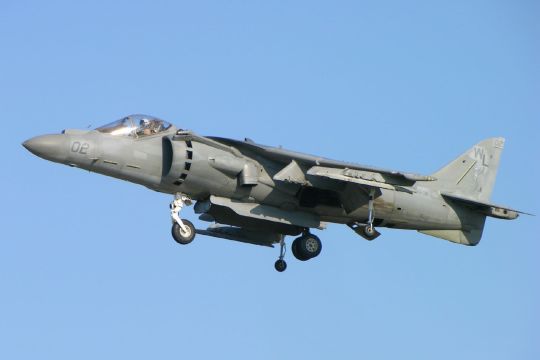
-An AV-8B Harrier II+ hovering. | Photo: D. Miller
The Italian Navy ordered two TAV-8B trainers, followed by a further order of 16 AV-8B+ to operated from the carriers Andrea Doria and Giuseppe Garibaldi. Italian Harriers were part of the nation’s commitment to the NATO campaign over Kosovo, dropping conventional and LGBs. An additional 7 aircraft were ordered in the early 200s to serve on the new carrier Cavour, with existing aircraft also upgraded to carry AIM-120s and JDAM guided bombs. Italy has ordered a force of 15 F-35B Lightning IIs to replace its Harriers.
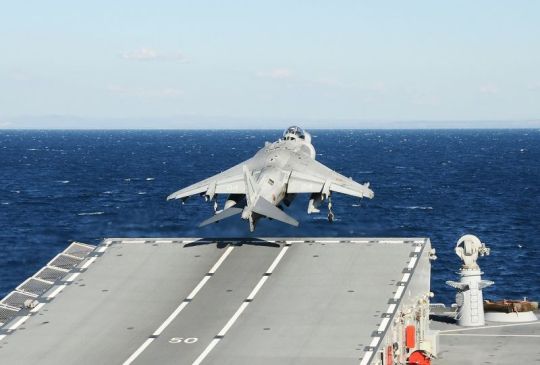
-An Italian AV-8B+ launching from the carrier Cavour’s ski jump. | Photo: Aldo Bidini
Already an operator of AV-8A Matadors, the Spanish Navy was the first international operator of the AV-8B Harrier II, ordering 12 of its own variants, known as the VA-2 Matador II. The Matadors operated from Príncipe de Asturias beginning in 1989. In 1993, an additional eight VA-2+ (the equivalent of the AV-8B+) were ordered, along with a TAV-8B trainer. In 2000, Boeing (which had absorbed McDonnell Douglas) signed a contract to upgrade a number of early model VA-2s (the number varies from 2-11) to Harrier Plus standards, allowing them to carry AIM-120 missiles. Due to budget constraints, only five of the original Matador IIs were upgraded. The Matadors were part of Spain’s commitment to Operation DENY FLIGHT, enforcing the UN’s no-fly zone over Bosnia and Herzegovina. After the Asturias was decommissioned in 2013, the Matador IIs operate from the amphibious assault ship Juan Carlos I. Spain was interested in replacing the VA-2s with F-35Bs, but has instead settled on extending the Matador’s service life, citing the cost of replacements.

-A Matador II+ over RIAT in 2019. | Photo: Airwolfhound
The first RAF Harrier II, known as the GR.5, entered service in 1987, replacing earlier GR.1 and GR.3 variants. The GR.5 differed from the AV-8B in that it had stainless steel leading edges to meet RAF bird-strike requirements, as well as in avionics and weapons. The RAF’s GR.5s were considered too immature a system to be deployed for the 1991 Gulf War, though several were dispatched to patrol the no-fly zones in 1993. Beginning in 1990 BAe began testing an upgraded Harrier II GR.7, which was broadly similar to the Night Attack AV-8B. After a successful test program 34 GR.7 were delivered through 1991, with the existing GR.5s upgraded beginning the same year. The GR.7s, hastily modified with GPS navigation, were deployed with NATO forced to the former Yugoslavia, and carried out recon and strike missions, often dropping LGBs on targets designated by SEPECAT Jaguars. Later, GR.7s were part of the UK’s commitment to the wars in Afghanistan and Iraq. Beginning in the middle 2000s, BAe began development of the GR.9 upgrade, which would improve communications, ground proximity warning and navigation systems, followed by the integration of the AGM-65 Maverick air-to-ground missile. The GR.9 upgrade also included replacement of fatigued airframe components. GR.9s were deployed to Afghanistan in 2007, allowing aged GR.7s to be withdrawn. The stresses of war and advancing age of the fleet caused the wholesale retirement of the RAF’s Harrier IIs in 2011, with their tasks being assigned to Tornado GR.4s until delivery of the F-35B Lightning.

-A Royal Air Force Harrier GR.9 conducts a combat patrol over Afghanistan, equipped with a laser-designator pod and armed with Paveway guided bombs. | Photo: USAF
#aircraft#aviation#avgeek#cold war#airplanes#airplane#cold war history#coldwar#aviation history#mcdonnell douglas#bae#british aerospace#AV-8B#av 8b#av8b#gr7#gr9#harrier gr7#harrier gr9#usmc#raf#rn#royal air force#royal navy
23 notes
·
View notes
Text
RIAT 2017
“Made in Heaven, tattooed on Earth”
During the third weekend of July, the gates of the RAF base in Fairford opened once again for the lucky visitors of this year’s Royal International Air Tattoo. 160.000 people were gathered to witness one of the best aviation feasts in Europe. Let the show begin…
A series of spectacular flypasts and jaw-dropping displays ensured the success of this year’s RIAT. In fact, it was considered by many, one of the best RIATs of the recent years. The airshow, which took place from July 14 till 16, attracted a record crowd of 160,000 people who met 246 aircraft from 32 air arms representing 26 nations. On the other hand, the typical English weather, with the low level clouds and the rain showers was again the only disadvantage of the show.
This year’s main theme was the 70th anniversary of USAF. Back in 1947, the aerial warfare service branch of the United States Army became a separate branch of the military. For this celebration, the organizers of RIAT, had prepared many surprises for the visitors of this year’s feast. The attendance of US military aircraft was catholic. After an absence of three years from the European airshows, mainly due to cutbacks, the US military aircraft were back again in Fairford. This time for good! Up in the air but also on the ground, the aircraft honored, with their own way, this big celebration.
At the very early stages, during winter, the famous aerobatic team, Thunderbirds, announced their participation at RIAT, which was also the only European visit of their schedule. Thunderbirds had visited RIAT in the past in 2007 and this one was their second visit.
#gallery-0-33 { margin: auto; } #gallery-0-33 .gallery-item { float: left; margin-top: 10px; text-align: center; width: 25%; } #gallery-0-33 img { border: 2px solid #cfcfcf; } #gallery-0-33 .gallery-caption { margin-left: 0; } /* see gallery_shortcode() in wp-includes/media.php */
The second surprise was the announcement of the extraordinary, in terms of capabilities, solo demo team of the F-22 Raptor. This unique fighter had made its first appearance in 2010 and was reintroduced last year along with the F-35 which was appearing over the English skies for the first time. Unfortunately the aircraft was not able to display on Saturday because of the low level clouds, but on Sunday it did perform its long waited display. The Raptor performed a powerful and superbly executed demonstration winning the “Paul Bowen” trophy for the best jet demonstration.
#gallery-0-34 { margin: auto; } #gallery-0-34 .gallery-item { float: left; margin-top: 10px; text-align: center; width: 16%; } #gallery-0-34 img { border: 2px solid #cfcfcf; } #gallery-0-34 .gallery-caption { margin-left: 0; } /* see gallery_shortcode() in wp-includes/media.php */
The aircraft, after its display, made a few flypasts with a P-51D warbird for the “USAF Heritage Flight Display” theme. The P-51 warbird flew across the Atlantic only for this reason. There were some rumours that the F-35 would also reappear at this year’s RIAT, but the DoD decided to send it to Paris Airshow instead.
Joining these two aerial assets to celebrate the USAF anniversary was also a special flypast of five of the main aircraft types currently operated by US Air Forces in Europe (USAFE) from bases in the UK and Germany. These aircraft performed an aerial parade on all three days of the show at RIAT. These were:
A KC-135R Stratotanker from the 100th Air Refueling Wing/351st Air Refueling Squadron at RAF Mildenhall, Suffolk. A C-130J-30 Hercules from the 86th Airlift Wing/37th Airlift Squadron stationed at Ramstein Air Base, Germany. Two F-15C Eagles and one F-15E Strike Eagle. These fighters were from the 48th Fighter Wing/493rd Fighter Squadron from RAF Lakenheath, Suffolk. Two F-16CM Fighting Falcons, flown by the 52nd Fighter Wing/480th Fighter Squadron at Spangdahlem Air Base, Germany.
But the highlight of all the aerial assets for this big celebration was the unexpected visit, on the last day of the show, of the rare bomber B-2A Spirit. The aircraft, taking part in an epic 23-hour transatlantic “Global Power” training flight from Whiteman Air Force Base in Missouri, performed two flypasts over the show with an escort of two F-15Cs before returning back to its base.
#gallery-0-35 { margin: auto; } #gallery-0-35 .gallery-item { float: left; margin-top: 10px; text-align: center; width: 25%; } #gallery-0-35 img { border: 2px solid #cfcfcf; } #gallery-0-35 .gallery-caption { margin-left: 0; } /* see gallery_shortcode() in wp-includes/media.php */
On the ground the presence of the USAF was also huge. The visitors had the chance to see and admire up close a variety of bombers, fighters, tankers, helicopters such as B-1B, B-52H, MC-130J, C-17A, KC-135R, F-16CM, F-15C/E, CV-22B, HH-60G. But the main attraction was another rare example, the U-2S Dragon Lady, another legendary example of an old design which still exists in the modern theater of warfare.
#gallery-0-36 { margin: auto; } #gallery-0-36 .gallery-item { float: left; margin-top: 10px; text-align: center; width: 25%; } #gallery-0-36 img { border: 2px solid #cfcfcf; } #gallery-0-36 .gallery-caption { margin-left: 0; } /* see gallery_shortcode() in wp-includes/media.php */
Apart from the Thunderbirds, other flying display highlights included the newly founded French Air Force’s Couteau Delta team flying two Mirage 2000D fighter aircraft; the Midnight Hawks, Finland’s aerobatic display team who last performed at the Air Tattoo back in 2004.
#gallery-0-37 { margin: auto; } #gallery-0-37 .gallery-item { float: left; margin-top: 10px; text-align: center; width: 25%; } #gallery-0-37 img { border: 2px solid #cfcfcf; } #gallery-0-37 .gallery-caption { margin-left: 0; } /* see gallery_shortcode() in wp-includes/media.php */
On the static display others notable attractions were the E-7A, a Boeing 737 Airborne Early Warning aircraft from the Royal Australian Air Force. The Royal Canadian Air Force Boeing CH-147F Chinook Helicopter which had been airlifted over in the back of a giant Boeing CC-177 Globemaster airlifter. The Greek Phantoms made their second consecutive appearance at the RIAT. This time, the other Squadron, 338 “Aris” of 117 Combat Wing, brought two examples (01508 and 01619). The 01508 was carrying two special painted external fuel tanks and it had a very nice livery on its vertical stabilizer.
#gallery-0-38 { margin: auto; } #gallery-0-38 .gallery-item { float: left; margin-top: 10px; text-align: center; width: 33%; } #gallery-0-38 img { border: 2px solid #cfcfcf; } #gallery-0-38 .gallery-caption { margin-left: 0; } /* see gallery_shortcode() in wp-includes/media.php */
But the most “exotic” visit was the reappearance of two Eastern-built Su-27 Flankers (a single seat and a two seat) of the Ukrainian Air Force escorted by an Il-76 Candid. This participation was announced in the beginning of the final week before the show. The single seat Sukhoi Su-27P1M amazed everyone with its unique capabilities and won the “As The Crow Flies” trophy for the best overall flying demonstration as judged by members of the Friends of the RIAT. These Ukrainian fighters had made their first appearance at RIAT back in 1996, while their last flying was held in 1999.
#gallery-0-39 { margin: auto; } #gallery-0-39 .gallery-item { float: left; margin-top: 10px; text-align: center; width: 33%; } #gallery-0-39 img { border: 2px solid #cfcfcf; } #gallery-0-39 .gallery-caption { margin-left: 0; } /* see gallery_shortcode() in wp-includes/media.php */
The greatest disappointment was the cancellation of the rare visit of an A-4N Skyhawk from a fleet operated by Discovery Air Defence, based at Wittmund. These A-4s are contracted to provide services ranging from threat simulation, target towing to flight test support. The aircraft were originally Israeli Air Force airframes before being purchased, stripped and modified by Discovery Air Services. This participation was cancelled literally at the very last minute, one day before the show. The last time an A-4 visited the Air Tattoo was 1977, when a small number of A-4Gs visited Greenham Common from 805 Squadron, Royal Australian Navy.
Next year’s RIAT is going to celebrate the centenary anniversary of RAF. So it is expected that next year’s show will break every record of attendance. For those who want to visit RIAT 2018, you should start planning your journey early. From our side, we will make sure we’ll be there. Cause after all, life is a RIAT!
See you there!
#gallery-0-40 { margin: auto; } #gallery-0-40 .gallery-item { float: left; margin-top: 10px; text-align: center; width: 16%; } #gallery-0-40 img { border: 2px solid #cfcfcf; } #gallery-0-40 .gallery-caption { margin-left: 0; } /* see gallery_shortcode() in wp-includes/media.php */
Article and Photograph by
George Karavantos
RIAT 2017 RIAT 2017 "Made in Heaven, tattooed on Earth" During the third weekend of July, the gates of the RAF base in Fairford opened once again for the lucky visitors of this year's Royal International Air Tattoo.
#a400m#b2#C17#f15c#f16#f18#f22#f22a#fairford#lackenheath#mirage 2000#riat#riat 2017#su27#tornado#u2#ukraine air force
0 notes
Text
L’expérience Blocher (Jean-Stéphane Bron)
Après avoir mis en scène le procès imaginaire de Cleveland contre Wall Street, le documentariste suisse Jean-Stéphane Bron vient ausculter la vie politique de son propre pays. Il offre, avec L'expérience Blocher, un portrait intime de l’un des artisans du désamour persistant entre la Suisse et l’Union européenne.
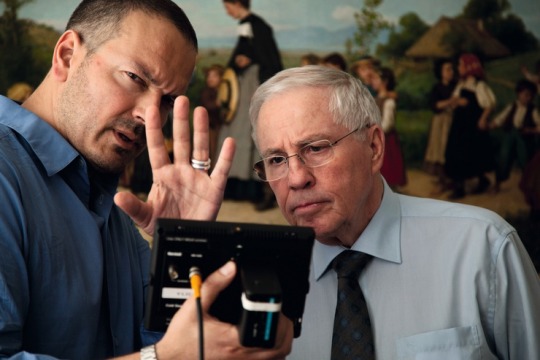
Dès 1992, on le compare au Français Jean-Marie le Pen et à l’Autrichien Jörg Haider. Mais Christoph Blocher est plus qu’un représentant de la crème du populisme d’extrême droite en Europe. En quelques années pleines de coups médiatiques plus pendables les uns que les autres, il en est devenu le modèle de réussite.
« Je regarde votre visage avec le sentiment de regarder mon pays sous un angle que je ne connais pas », dit Bron en voix-off. Paradoxalement, dans son combat contre l’Union européenne, c’est aussi un certain visage de l’Europe qu’offre Blocher. Le film nous plonge dans un retour sur un présent bien inquiétant, qui semble rejouer le passé noir de l’Europe des années 1930. La comparaison est délicate et controversée mais on devine qu’elle s’imposait, dans l’espoir qu’elle soit salvatrice.
« Une figure centrale de notre inconscient collectif »
Jean-Stéphane Bron aborde son sujet sous l’angle d’une réflexion sur les mythes, considérant Blocher comme « une figure centrale de notre inconscient collectif ». Le référendum de 1992 sur l’adhésion de la Suisse à l’Espace économique européen marque sa naissance politique. Blocher prononce alors plus de 200 discours qui rassemblent des milliers de Suisses autour de l’inquiétude de la perte de souveraineté. La victoire inattendue du « non » achève de faire de lui une véritable star. Dans des scènes incroyables, on le voit se comparer à un roi du Moyen-âge, à Mozart, ou encore… à Dieu, lors d’un meeting ! On lui passe toutes les extravagances.
Jean-Stéphane Bron tente une double psychanalyse : il revient sur la séduction exercée par cet homme neuf parti de presque rien, tout en essayant d’entrer dans sa psyché. Simple fils de pasteur, il fait un apprentissage d’agriculteur et c’est l’absence de terre qui l’éloignera de cette première vocation. C’est dans cette angoisse primitive de la terre à défendre que se situerait le sens profond du positionnement politique de Blocher, et la clé de ce qui le connecte aux foules qui l’acclament.
Un requin de la finance
Le retour sur les origines du personnage permet surtout de plonger dans son passif de requin de la finance. Blocher l’industriel s’est lancé dans un capitalisme décomplexé, rachetant Ems dès 1983, amassant au passage une fortune estimée à 2 milliards de dollars en 1999. Il fait partie du lobby qui met en œuvre la poursuite des affaires avec le régime de l’apartheid dans les années 1980, un opportunisme cynique que l’on retrouve dans les partenariats d’Ems avec la Chine communiste.
C’est sa capacité à réussir un grand écart improbable entre hautes sphères de la finance et base populaire qui va faire le succès de Blocher à la tête du Parti suisse du peuple (UDC). Sans souci des paradoxes : lui qui défend les salaires suisses contre la concurrence des travailleurs étrangers, il est connu pour être un patron dur et l’artisan de bien des restructurations d’entreprises, licenciements à la clé. Il y a indéniablement quelque chose de fascinant à le voir esquiver, par sa démagogie triomphante, des accusations pourtant confondantes.
« Un soixante-huitard de l’autre bord »
C’est sa maîtrise du jeu des médias qui lui a permis de faire de l’UDC le premier parti suisse, en 1999, avant d’entrer au gouvernement en 2003. Il s’adonne à un cirque médiatique qui consiste, selon ses propres mots, à « élever le niveau de provocation pour faire entrer un thème dans la société ». À commencer par la désignation de boucs émissaires.
Les campagnes d’affiches xénophobes se succèdent, allant jusqu’à littéralement désigner les criminels étrangers comme les « moutons noirs » du pays. Le trait est d’autant plus démagogique que l’immigration en Suisse est majoritairement européenne, française et allemande. Blocher, qui aime à s’auto-qualifier de « soixante-huitard de l’autre bord », attise les tensions de la société suisse au point qu’il finit par être évincé du gouvernement en 2007, dans une réaction historique du conseil fédéral.
Finalement, la revanche de 2011 sera un nouvel échec personnel. Mais, comme le souligne Jean-Stéphane Bron, il ne doit pas masquer une victoire plus profonde sur le terrain des idées, qui se banalisent dans la société suisse. Une victoire attestée par le succès de l’initiative populaire « contre l’immigration de masse » le 9 février 2014, déjà annoncée par Blocher à la fin du documentaire.
Article initialement paru dans le webzine Café Babel.
0 notes
Text
jhellender Following
DSC_3467_
RIAT 2007 - 14/07/2007
Lockheed F-117 Nighthawk
Via Flickr
13 notes
·
View notes
Text
jhellender Following
DSC_5526_
RIAT 2007 Monday Departures
RAF British Aerospace Harrier GR.9 ZG480
Via Flickr
13 notes
·
View notes
Text
jhellender Following
DSC_5526_
RIAT 2007 Monday Departures
RAF British Aerospace Harrier GR.9 ZG480
Via Flickr
13 notes
·
View notes
Text
jhellender Following
DSC_5113_
RIAT 2007 Monday Departures
Hellenic Air Force A-7 Corsair II 1247310 Tiger Livery
Via Flickr
11 notes
·
View notes
Text
jhellender Following
DSC_5614_
RIAT 2007 Monday Departures
USAF Boeing B-52H Stratofortress AF61 017
AFRC - Air Force Reserve Command
Via Flickr
10 notes
·
View notes
Text
jhellender Following
DSC_5571_
RIAT 2007 Monday Departures
USAF Rockwell B-1 Lancer AF85-090
Via Flickr
9 notes
·
View notes
Text
jhellender Following
DSC_5526_
RIAT 2007 Monday Departures
RAF British Aerospace Harrier GR.9 ZG480
Via Flickr
9 notes
·
View notes
Text
jhellender Following
DSC_5280_
RIAT 2007 Monday Departures
Royal Navy Hawker Siddeley Hawk T1 XX175
Via Flickr
9 notes
·
View notes
Text
jhellender Following
DSC_5050_
RIAT 2007 Monday Departures
Curtiss P-40M Warhawk G-KITT
The Fighter Collection
Via Flickr
9 notes
·
View notes
Text
jhellender Following
DSC_5571_
RIAT 2007 Monday Departures
USAF Rockwell B-1 Lancer AF85-090
Via Flickr
7 notes
·
View notes


